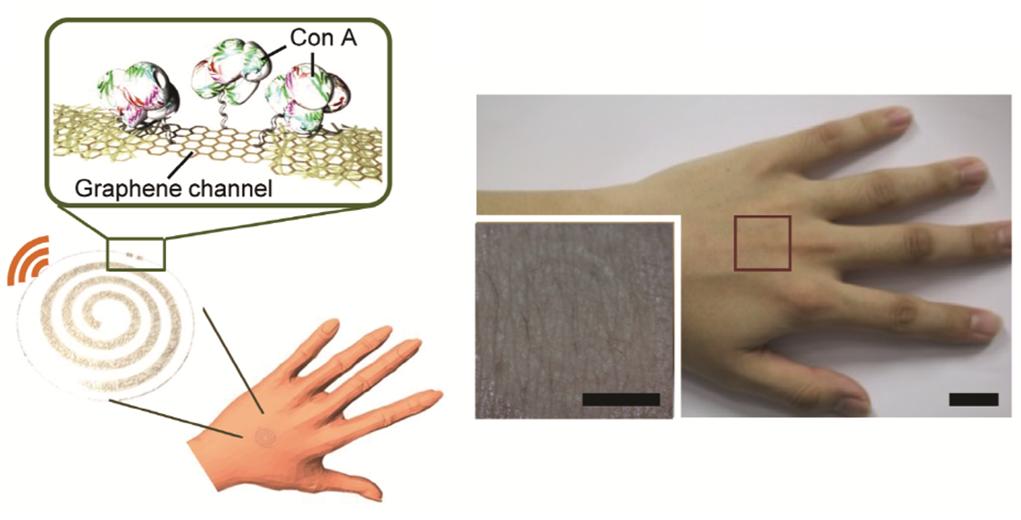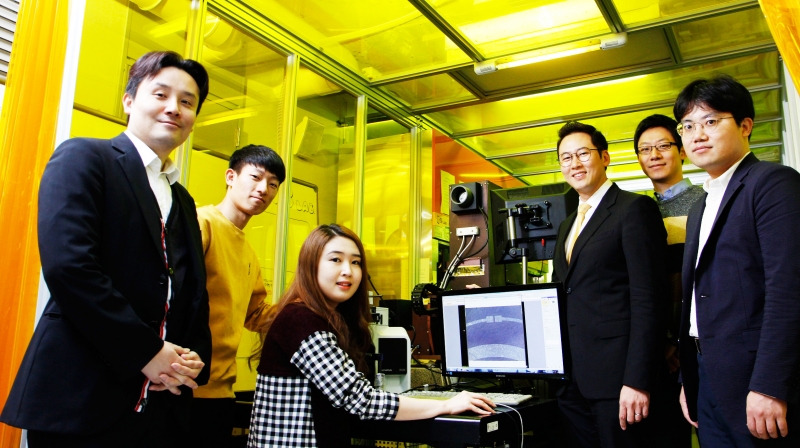In recent years, flexible sensor has attracted much of the attention in the tech industry over the past years. Transparent electrodes, for instance, have been widely used in things like touch screens, flat-screen TVs, solar cells, and light-emitting devices. Moreover, the majority of today’s touchscreen devices, such as tablets and smartphones are made using indium tin oxide (ITO) due to its high conductivity and high tansmittance.
However, the fragility and lack of flexibility of ITO severely limits it for applications in flexible and stretchable electronics. To solve these problems, researchers have been working hard to demonstrate how graphene-treated nanowires can be used to produce flexible touchscreens at a fraction of the current cost.
Using a simple, scalable and inexpensive method, a team of scientists, led by Prof. Jang-Ung Park from UNIST’s School of Materials Science and Engineering has produced transparent and stretchable field-effect transistor sensors, using graphene-metal nanowire hybrid nanostructures. This joint research team includes Prof. Park, Professor Byeong Su Bae from KAIST, and Executive Director Hye Yong Chu from the Electronics and Telecommunications Research Institute (ETRI).
In a paper published online April 22, 2015, Prof. Park’s research team demonstrated that these wearable wireless smart sensors can still maintain its electrical properties stably against large mechanical deformations, even under high stretching and bending strain. The results were published in Advanced Materials.

Wearable wireless smart sensor, composed of the antenna and electrodes based on hybrid structure, and a graphene channel. These graphene-metal nanowire hybrid nanostructures are trasparent when attached to the skin of the back of a human hand and show high electrical conductivity even under high stretching and bending strain.
UNIST Flexible Nanoelectronics and Biotechnology Lab focuses on the fabrication of flexible integrated circuits for applications in electronics and biotechnology. They seek to exploit interesting properties of nanomaterials, and develop methods for fabrication of devices with unconventional geometries (i.e. flexible and stretchable forms) using diverse nanomaterials.
This work was supported by the Ministry of Science, ICT & Future Planning and the Ministry of Trade, Industry and Energy of Korea through Basic Science Research Program of National Research Foundation, IT R&D program, Materials Original Technology Program, Technology Innovation Program, Convergence Technology Development Program for Bionic Arm, and Pioneer Research Center Program.
Journal Reference:
Joohee Kim, Mi-Sun Lee, Sangbin Jeon, Minji Kim, Sungwon Kim, Kukjoo Kim, Franklin Bien, Sung You Hong, Jang-Ung Park., “Highly Transparent and Stretchable Field-Effect Transistor Sensors Using Granphene-Nanowire Hybrid Nanostructures,” Advanced Materials, published online (2015).
















